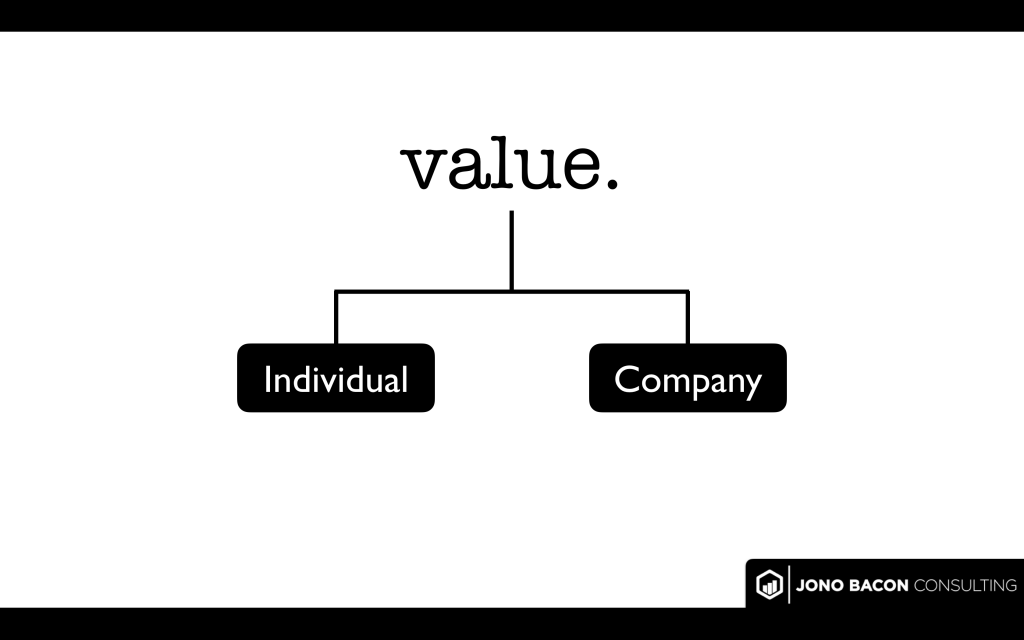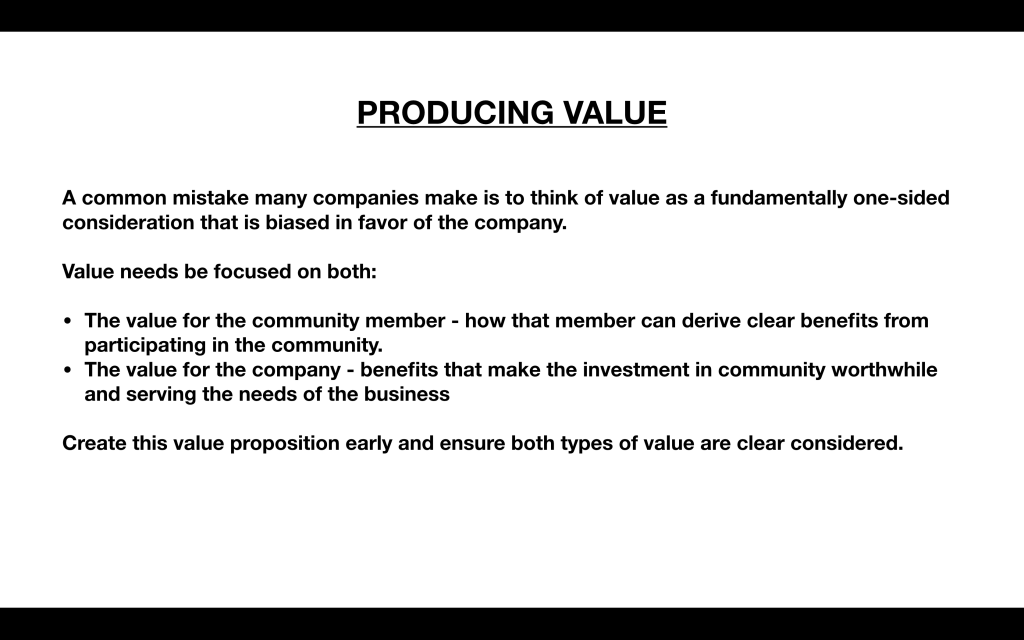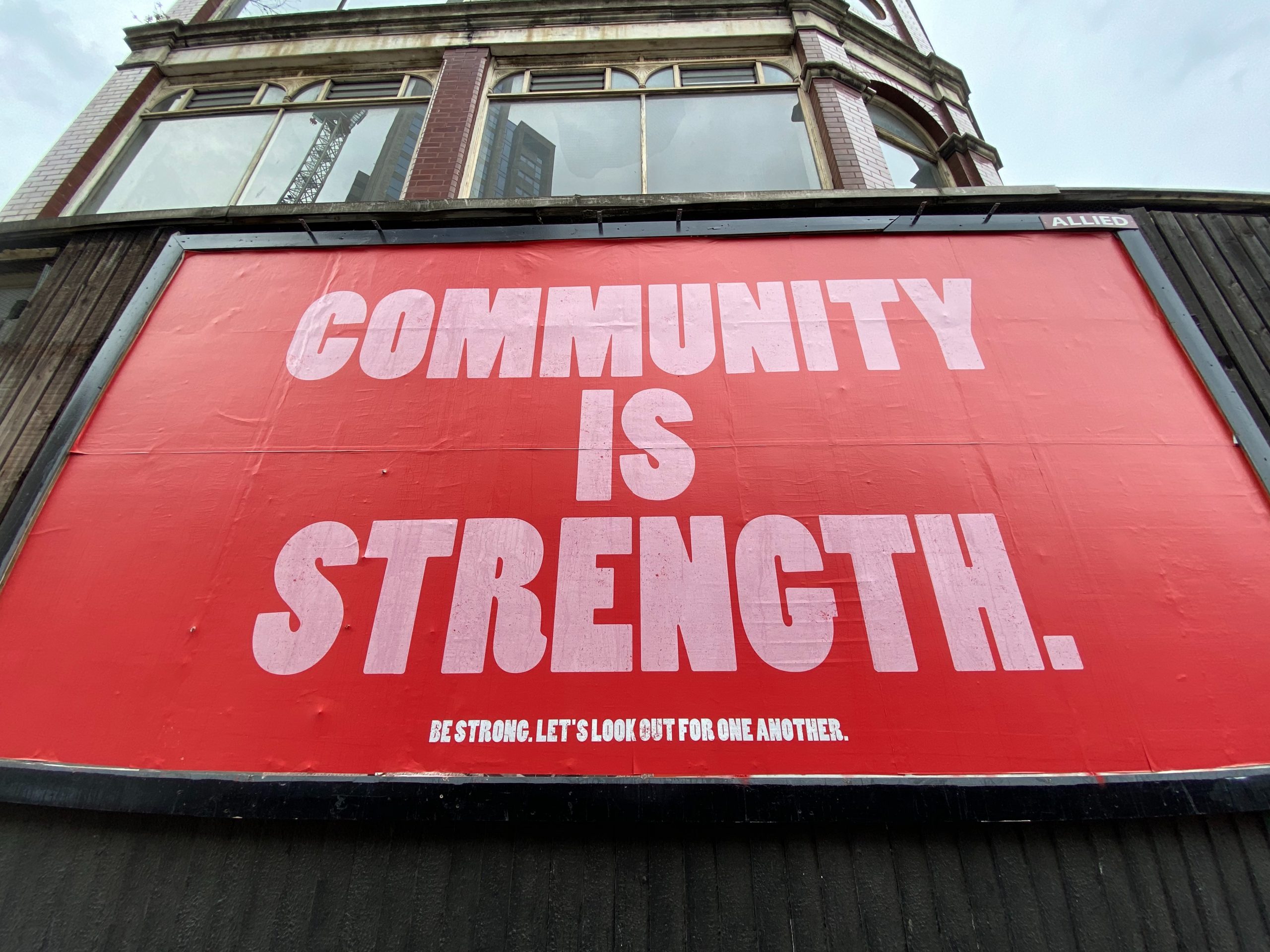Public speaking is an art form. There are some amazing speakers, such as Lawrence Lessig, Dawn Wacek, Rory Sutherland, and many more. There are also some boring, rambling disasters that clog up meetups, conferences, and company events.
I don’t claim to be an expert in public speaking, but I have had the opportunity to do a lot of it, including keynotes, presentation sessions, workshops, tutorials, and more. Over the years I have picked up some best practices and I thought I would share some of them here. I would love to hear your recommendations too, so pop them in the comments.
1. Produce Clean Slides
Great talks are a mixture of simple, effective slides and a dynamic, engaging speaker. If one part of this combination is overloading you with information, the other part gets ignored.
The primary focus should be you and your words. Your #1 goal is to weave together an interesting story that captivates your audience.
Your slides should simple provide a visual tool to help get your words over more effectively. Your slides are not the lead actress, they are the supporting actor.
Avoid extensive amounts of text and paragraphs. Focus on diagrams, pictures, and simple lists.
Good:

Bad:

Look at the slides of great speakers to get your creativity flowing.
2. Deliver Pragmatic Information
Keynotes are designed for the big ideas that set the stage for a conference. Regular talks are designed to get over key concepts that can help the audience expand their capabilities.
With both, give your audience information they can pragmatically use. How many times have you left a talk and thought, “Well, that was neat, but, er…how the hell do I start putting those concepts into action?“
You don’t have to have all the answers, but you need to package up your ideas in a way that is easy to consume in the real world, not just on a stage.
Diagrams, lists, and step-by-step instructions work well. Make these higher level for the keynotes and more in-depth for the regular talks. Avoid abstract, generic ideas: they are unsatisfying and boring.
3. Build and Relieve Tension
Great movies and TV shows build a sense of tension (e.g. a character in a hostage situation) and the payoff is when that tension is relieved (e.g. the character gets rescued.)
Take a similar approach in your talks. Become vulnerable. Share times when you struggled, got things wrong, or made mistakes. Paint a picture of the low point and what was running through your mind.
Then, relieve the tension by sharing how you overcame it, bringing your audience along for the ride. This makes your presentation dynamic and interesting, and makes it clear that you are not perfect either, which helps build a closer connection with the audience. Speaking of which…
4. Loosen Up and Be Yourself
Far too many speakers deliver their presentations like they have a rod up their backside.
Formal presentations are boring. Presentations where the speaker feels comfortable in their own skin and is able to identify with the audience are much more interesting.
For example, I was delivering a presentation to a financial services firm a few months ago. I weaved in it stories about my family, my love of music, travel experiences, and other elements that made it more personal. After the session a number of audience members came over and shared how it was refreshing to see a more approachable presentation in a world that is typically so formal.
Your goal is to build a connection with your audience. To do this well they need to feel you are on the same level. Speak like them, share stories that relate to them, and they will give you their attention, which is all you can ask for.
5. Involve Your Audience (but not too much)
There is a natural barrier between you and your audience. We are wired up to know that the social context of a presentation means the speaker does the talking and the audience does the listening. If you violate this norm (such as heckling), you would be perceived as an asshole.
You need to break this barrier, but to never cede control to your audience. If you loose control and make the social norm for them to interrupt, your presentation will be riddled with audience noise.
Give them very specific ways to participate, such as:
- Ask how they are doing at the beginning of a talk.
- Throw out questions and invite them to put their hands up (or clap loudly.)
- Invite someone to volunteer for something (such as a role play scenario.)
- Take and answer questions.
6. Keep Your Ego in Check
We have all seen it. A speaker is welcomed to the stage and they constantly remind you about how great they are, the awards they have won, and how (allegedly) inspirational they are. In some cases this is blunt-force ego, in some cases it is a humblebrag. In both cases it sucks.
Be proud of your work and be great at it, but let the audience sing your praises, not you. Ego can have a damaging impact on your presentation and how you are perceived. This can drive a wedge between you and your audience.
7. Don’t Rush, but Stay on Time
We live in multi-cultural world in which we travel a lot. You are likely to have an audience from all over the world, speaking many different languages, and from a variety of backgrounds. Speaking at a million words a minute will make understanding you very difficult some people.
Speak at a comfortable pace, and don’t rush it. Now, some of you will be natural fast-talkers, and will need to practice this. Remember these?:

Well, we now all have them on our phones. Switch it on, practice, and ensure you always finish at least a few minutes before your allocated time. This will give you a buffer.
Running over your allocated time is a sure-fire way to annoy (a) the other speakers who may have to cut their time short, and (b) the event organizer who has to deal with overruns in the schedule. “But it only went over by a few minutes!” Sure, but when everyone does this, entire events get way behind schedule. Don’t be that person.
8. Practice and get Honest Feedback
We only get better when we practice and can see our blind spots. Both are essential for getting good at public speaking.
Start simple. Speak at your local meetups, community events, and other gatherings. Practice, get comfortable, and then file papers at conferences and other events. Keep practicing, and keep refining.
Critique is essential here. Ask close friends to sit in your talks and ask them for blunt feedback afterwards. What went well? What didn’t go well? Be explicit in inviting criticism and don’t overreact to them when you get it. You want critical feedback…about your slides, your content, your pacing, your hand gestures…the lot. I have had some very blunt feedback over the years and it has always improved my presentations.
9. Never Depend on Conference WiFi
It rarely works well, simple as that.
Oh, and your mobile hotspot may not work either as many conference centers often seem to be built in borderline faraday cages. Next…
10. Remember, it is just a Presentation
Some people get a little wacky when it comes to perfecting presentations and public speaking. I know some people who have spent weeks preparing and refining their talks, often getting into a tailspin about imperfections that need to be improved.
The most important thing to worry about is the content. Is it interesting? Is it valuable? Does it enrich your audience? People are not going to remember the minute details of how you said something, what your slides looked like, and what whether you blinked too much. They will remember the content and ideas: focus on that.
Oh, and a bonus 11th: turn off animations. They are great in the hands of an artisan, but for most of us they look tacky and awful.
I am purely scratching the surface here and I would love to hear your suggestions of public speaking tips and recommendations. Share them in the comments! Oh and be sure to join as a member, which is entirely free.








